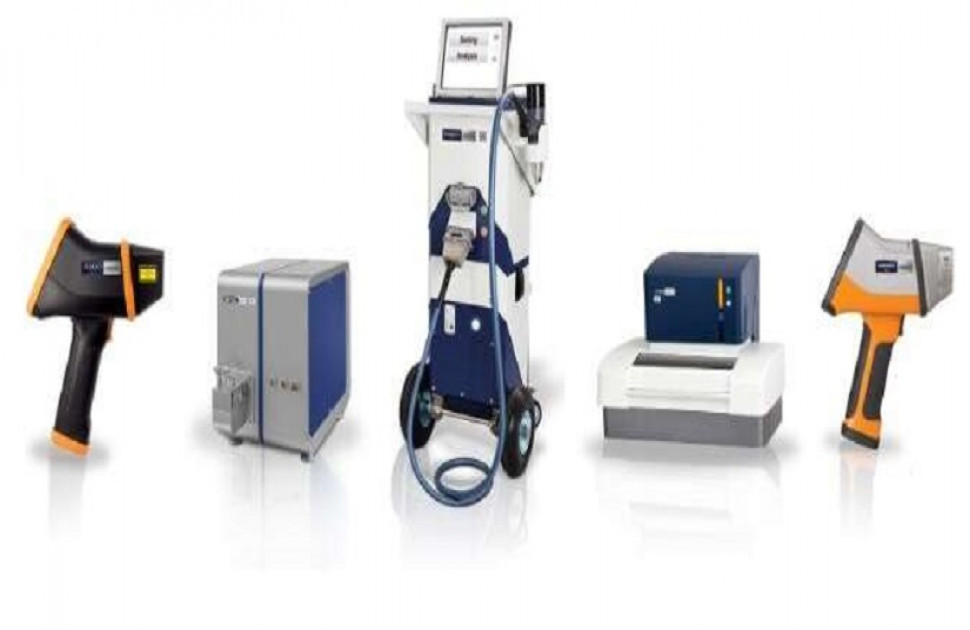Your valuable analytical instruments may have been switched off for a few weeks. Whether you use a bench-top or handheld Hitachi analyzer here we offer guidance how to ensure optimum instruments performance as your ramp up your operations once again:
Part 1: General instructions, applicable for warm climates and usage of uninterrupted power supply (UPS)
- Ventilate the room where the instrument is installed for at least 30 minutes.
- Clean the complete lab area around the instrument.
- To clean the unit exterior, use light detergents. Strong solvents should be avoided.
- Switch on the air conditioning for 5-10 minutes with room ventilations open.
- Close the room ventilations and keep the air conditioning on for 30 minutes or more to maintain the room temperature between 20 to 25° C before starting the UPS (uninterrupted power supply).
- Start the uninterrupted power supply (UPS) and wait for a few minutes.
- For XRF follow part 2, for OES follow part 3
Part 2: Starting up bench-top XRF instruments
- Now start the instrument and leave the instrument idle for at least two hours. If your organization has an electrical department you may wish to get the main electricity supply checked once before powering on the systems.
- Warm up your instrument by starting a 50-fold measurement of any sample. Please also refer to the manual for starting your XRF instrument.
- For coatings analyzers perform the calibration (Spect-cal / reference measurement), for LAB-X and X-Supreme8000 measure a QC check sample to ensure the instrument is running as it should.
- Check on calibration foils / certified samples and verify the results.
- If you find results are with-in tolerance limits, then start sample testing.
- For LAB-X and X-Supreme8000 check the Helium connections (if Helium is used), i.e. tubing is connected, regulators are set as they should be.
Part 3: Starting up OES instruments
- Please also refer to the manual for starting your OES instrument.
- Make sure that the instrument is connected to the argon gas supply, the argon pressure is set correctly and all relevant valves are opened.
- If your organization has an electrical department you may wish to get the main electricity supply checked once before powering on the systems.
- Now start the instrument and follow the starting procedure in the operating instructions for your model, as these vary depending on the type of device.
- Check and clean the probe head (for mobile OES devices) or the spark stand
- Warm up the instrument with 20 sparks. Make sure you have a good focal spot (clear black condensation on the edge and visible remelted material in the centre of the focal spot). If this is not visible, check the argon supply for possible leaks and repeat this test.
- Perform the standardization.
- Check certified samples and verify the results.
- If you find results are within tolerance limits, then start sample testing.
If the results out of tolerance, please contact us.
Handheld analyzers (X-MET, Vulcan)
We don’t expect a handheld analyzer to perform any differently regardless if it hasn’t been used for three days or three months. However, it’s good policy to check over your analyzer before putting it back to into use:
- Take out the instrument from its case and charge the batteries. Allow 5-6 hours to charge an empty X-MET8000 or Vulcan battery.
- To clean the unit exterior, use light detergents. Strong solvents should be avoided.
- Check the instrument:
- Replace the X-MET8000 measurement window with a clean and intact one, if the window is broken or dirty.
- Clean the Vulcan measurement window with a cotton bud following the instructions provided.
- Measure provided check sample to verify that the instrument is in good working condition.
- Compare the result to one taken before the break, if possible. Then you’re ready to go.
Here you can watch our tutorial videos on “How to start the X-MET8000”.
We also recommend using safety devices like face masks, hand gloves, sanitisers, etc. during the use of the instrument as per your organization guidelines.
If you need any further help or advice, please contact our team.
Source: How to ramp up your analyzer after a shutdown | Hitachi (hitachi-hightech.com)










